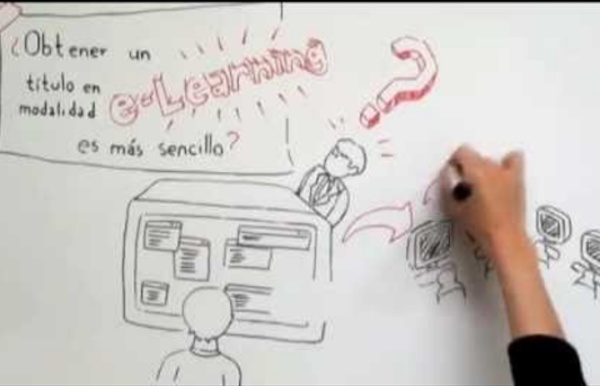



http://www.youtube.com/watch?v=MoNxNbMYnE4
Better Lessons - Free Lesson Plans math english language arts Kindergarten Counting & Cardinality Operations & Algebraic Thinking 6 Effective Ways To Use Google Drive in eLearning In this article, I'll talk about the many ways that you can use Google Drive to boost your eLearning course, and I will offer you some advice in regards to how you can take full advantage of the features that Google Drive has to offer to eLearning professionals. Google may be well known for its search engine and email service, Gmail, but its apps for education are quickly becoming popular in the eLearning industry. In fact, in the recent years, a growing number of instructional designers and eLearning professionals have discovered the usefulness of Google in the learning process.
Best Apps for Teaching & Learning 2017 Touchcast Studio by Touchcast Level: Middle School + Platform: iOS Website Motivation and e-learning - personal reflections Self-directed learning on the internet is becoming increasingly popular and it is one other way to encourage our students to practise their language outside the classroom, or it is a vital resource for the student who cannot get to a classroom. What is an e-learning site? Introduction to the cyber classroom Are students motivated by this type of learning? Reasons for a high drop-out rate How to keep learners motivated Conclusion What is an e-learning site? Students who are interested in guiding their own learning can freely access sites such as www.commnet.edu/grammar, owl.english.purdue.edu and find excellent handouts which are accompanied by answers.
Strategies for effective group work in the Online Class This is the second post in a three part series on group work in online learning communities. Post one, featured why we need group work in online learning, and post three will be on how to evaluate group work in online assignments. Quick recap – why oh why do we need to create opportunities for collaboration and structured learning in an online class? Because… Collaboration is the future—collaborative skills are essential skills for the 21st century.Working with others builds upon existing knowledge. Great ideas were not created in vacuum —post one includes an excellent video about.
The flipped classroom: six myths What is the flipped classroom? According to many in the educational technology business, it’s using online video to deliver lectures to students and personalize the learning process. However, if you read the work of education researchers, the flipped class model is more about promoting active learning in class, in pursuit of higher-level, critical thinking skills. Course: Foundations of Flipped Learning / Course Foundations of Flipped Learning™ Looking for a 16-20 hour course on flipped learning? This blended course has four self-paced online modules, an all-day onsite training, followed by two remote mentoring sessions. Launched in May, 2013, numerous cohorts of teachers from schools, departments and districts throughout the US have gone through the program. This is the only PD course developed and written by FLN Cadre members and Pearson. This training jointly produced and offered by the Flipped Learning Network and Pearson.
Collaborative Learning Builds Deeper Understanding Steve Chabon: Here at the College Preparatory School in Oakland, California, collaborative learning is one of the most important ways our students learn and grow. Harrison: In math we work in groups every day, asking each other questions before we ask the teacher. Maya: In English, we lead our own round table discussions to deepen our understanding of the books we read. David Markus: College Prep is one of the top private high schools in the country and a terrific model for collaborative learning. Research: Collaboration Is Key for Teacher Quality Research Research: Collaboration Is Key for Teacher Quality Teachers get better when they work together. Preparing a Classroom Culture for Deeper Learning After reading an excerpt from the Declaration of Independence, students form a circle to engage in conversation about liberty and the pursuit of happiness. The inquiry circle begins with two questions posed by the teacher: What is more important, liberty or the pursuit of happiness? Are liberty and the pursuit of happiness inalienable rights? To begin, some students argue that liberty and the pursuit of happiness are only open to the people who follow rules within a society.
Asking Questions The Key to Engaging Students in Learning Good questioning skills may be the world's most unsung talent. Ask the right questions in the right way, and you'll engage people; do it differently, and you'll put them off. Anyone who's ever worked with kids knows how hard it can be to elicit information or opinions from them when they've got a case of the "idunnos." Certainly, for an inquiry-based learning program there's no more important talent, and by understanding the art of the question, you'll not only get children more actively involved, you'll help them learn this important skill themselves. Who knows?
Many, Many Examples Of Essential Questions Many, Many Examples Of Essential Questions by Terry Heick Essential questions are, ask Grant Wiggins defines, “‘essential’ in the sense of signaling genuine, important and necessarily-ongoing inquiries.” These are grapple-worthy, substantive questions that not only require wrestling with, but are worth wrestling with–that could lead students to some critical insight in a 40/40/40-rule sense of the term. I collected the following set of questions through the course of creating units of study, most of them from the Greece Central School District in New York.
only 4.30 minutes to cover good points about e-learning (the last part is just an ad) by liafernandez Apr 20